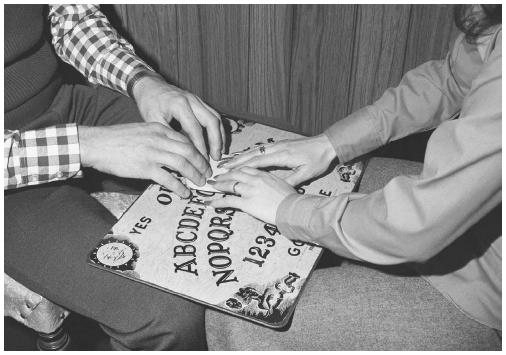 First patented in 1891, the Ouija Board has been popular ever since—a remarkably long run. Moving a heart-shaped “planchette” across a board printed with an alphabet, the numbers 0-9, and YES and NO options allowed players to spell out and compile apparently un-sourced “messages.” The effect was mysterious then and remains a bit spooky today.
First patented in 1891, the Ouija Board has been popular ever since—a remarkably long run. Moving a heart-shaped “planchette” across a board printed with an alphabet, the numbers 0-9, and YES and NO options allowed players to spell out and compile apparently un-sourced “messages.” The effect was mysterious then and remains a bit spooky today.
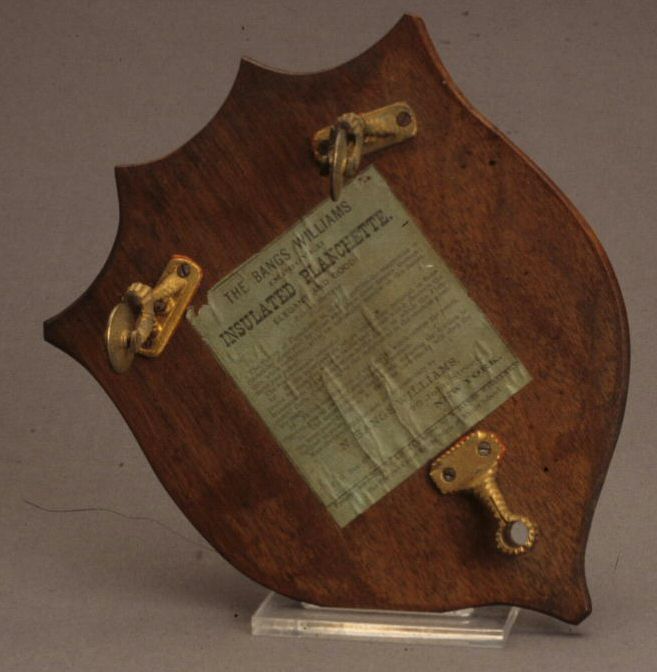 It’s no coincidence that Ouija became popular in the late 1800s when spiritualism was sweeping from Europe to the United States. The original sellers promised an “intelligent answer to any question” and surpassing effects in “mind-reading,” “second sight,” and “clairvoyance.” At that time, hypnotists entertained drawing room gatherings with their mysterious arts. Groups gathered for séances, too, or experimented with another mysterious parlor game, automatic writing, where participants let their thoughts flow freely through the pen.
It’s no coincidence that Ouija became popular in the late 1800s when spiritualism was sweeping from Europe to the United States. The original sellers promised an “intelligent answer to any question” and surpassing effects in “mind-reading,” “second sight,” and “clairvoyance.” At that time, hypnotists entertained drawing room gatherings with their mysterious arts. Groups gathered for séances, too, or experimented with another mysterious parlor game, automatic writing, where participants let their thoughts flow freely through the pen.
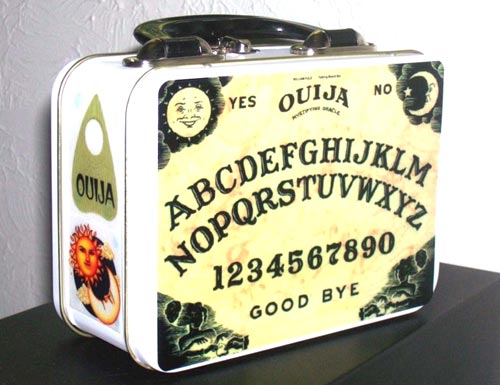 We can hardly blame people for craving explanations for the unexplained. Freud’s theories of the unruly unconscious and his therapeutic method free association were not yet fully worked out, and other more easily grasped physiological explanations were not well-known. It’s also tempting to think that the rumblings of the half-hidden mind and dream phantasmagoria are more profound than our conscious thoughts. And so we see in the Ouija Board a relic of the popular uneasiness that grew proportionately as modern empirical science was on the rise.
We can hardly blame people for craving explanations for the unexplained. Freud’s theories of the unruly unconscious and his therapeutic method free association were not yet fully worked out, and other more easily grasped physiological explanations were not well-known. It’s also tempting to think that the rumblings of the half-hidden mind and dream phantasmagoria are more profound than our conscious thoughts. And so we see in the Ouija Board a relic of the popular uneasiness that grew proportionately as modern empirical science was on the rise.
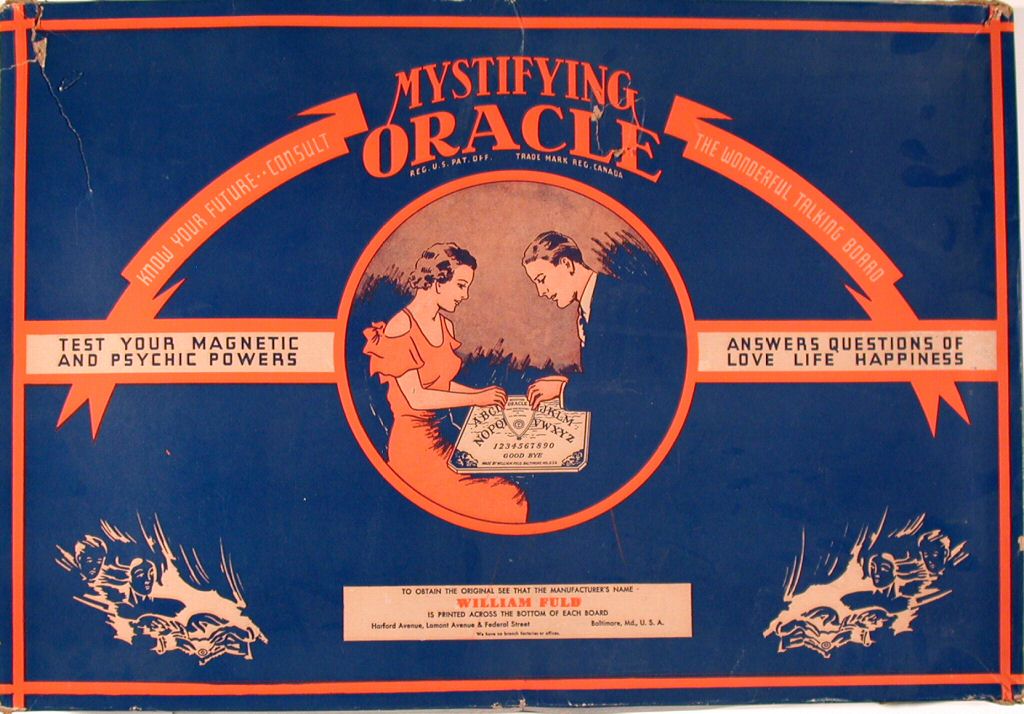 Ouija didn’t come to Parker Brothers until 1966, well into the Space Age, yet it still carried a hint of eeriness. Today’s marketing for a glow-in-the-dark version calls the Ouija Board “a mystery for over 30 years!” But the toy has an ancient history linked to the liminal space between physical and mental phenomenon. In fact, comparable devices—in the form of exploring pendulums or diviners—appeared in Europe more than 1,600 years ago and possibly 1,500 years before that in China. These devices were not toys, though. Seers employed them to foretell the future or manipulate the present. But oracles of old could have had no clue about how their magical equipment really worked.
Ouija didn’t come to Parker Brothers until 1966, well into the Space Age, yet it still carried a hint of eeriness. Today’s marketing for a glow-in-the-dark version calls the Ouija Board “a mystery for over 30 years!” But the toy has an ancient history linked to the liminal space between physical and mental phenomenon. In fact, comparable devices—in the form of exploring pendulums or diviners—appeared in Europe more than 1,600 years ago and possibly 1,500 years before that in China. These devices were not toys, though. Seers employed them to foretell the future or manipulate the present. But oracles of old could have had no clue about how their magical equipment really worked.
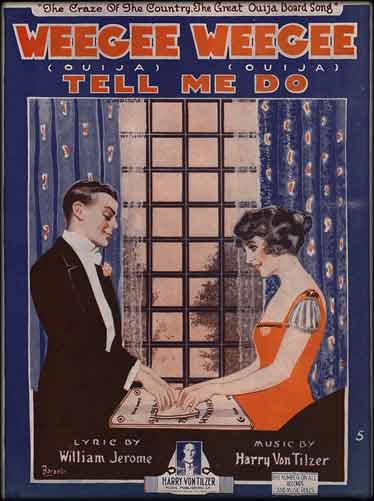 Parker Brothers insists that Ouija is just a board game, but less scrupulous marketers of similar games play the paranormal angle for all it’s worth. (And critics insist that games like these can “let demonic forces into your home.”) Actually there’s no mystery about the action of the Ouija Board. The easiest explanation is that one or more participants knowingly and cleverly move the planchette—it’s a joke on the unwitting outsider. But the more interesting explanation doesn’t depend upon mischief or deception. William Benjamin Carpenter, a British physiologist, discovered this secret in 1852; later, Harvard physician William James popularized the explanation in his 1890 book, Principles of Psychology. Though the account is old, it helps us learn how our minds work when we’re at play.
Parker Brothers insists that Ouija is just a board game, but less scrupulous marketers of similar games play the paranormal angle for all it’s worth. (And critics insist that games like these can “let demonic forces into your home.”) Actually there’s no mystery about the action of the Ouija Board. The easiest explanation is that one or more participants knowingly and cleverly move the planchette—it’s a joke on the unwitting outsider. But the more interesting explanation doesn’t depend upon mischief or deception. William Benjamin Carpenter, a British physiologist, discovered this secret in 1852; later, Harvard physician William James popularized the explanation in his 1890 book, Principles of Psychology. Though the account is old, it helps us learn how our minds work when we’re at play.
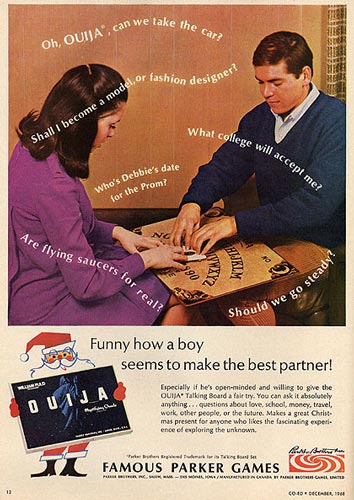 Here is what we know to be true. Ouija Board “answers” depend not upon the intercession of spirits, but upon a well-understood physiological phenomenon called ideomotor action. Muscular action doesn’t always arise out of deliberate will or, in fact, even upon our awareness. In the case of Ouija, our keen expectations for a certain outcome will direct the movements of our arms and hands at a level below our conscious awareness. And so the planchette will appear to select letters that spell out words that give us the answers we secretly desire. Sometimes, of course, the answers that players hope for are an open secret, and the replies are more like a fulfillment of a wish. Because this process appears to play out on its own, we are tickled with eerie possibilities.
Here is what we know to be true. Ouija Board “answers” depend not upon the intercession of spirits, but upon a well-understood physiological phenomenon called ideomotor action. Muscular action doesn’t always arise out of deliberate will or, in fact, even upon our awareness. In the case of Ouija, our keen expectations for a certain outcome will direct the movements of our arms and hands at a level below our conscious awareness. And so the planchette will appear to select letters that spell out words that give us the answers we secretly desire. Sometimes, of course, the answers that players hope for are an open secret, and the replies are more like a fulfillment of a wish. Because this process appears to play out on its own, we are tickled with eerie possibilities.
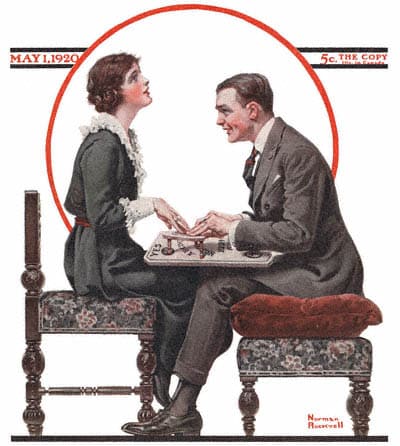 Satisfied Ouija players don’t need to be embarrassed when the game has drawn them in, because the peculiar ideomotor effect baffled even serious investigators before Carpenter’s research. It’s hard not to jump to a conclusion when an event resists explanation—who after all is moving that planchette if we’re not? But there’s nothing supernatural about playing with a Ouija Board. In fact, this is the best opportunity to see the “ideomotor effect” at work. Subtle suggestions guide our movements. We select the letters ourselves in this game; it’s just that we don’t quite know that we do it.
Satisfied Ouija players don’t need to be embarrassed when the game has drawn them in, because the peculiar ideomotor effect baffled even serious investigators before Carpenter’s research. It’s hard not to jump to a conclusion when an event resists explanation—who after all is moving that planchette if we’re not? But there’s nothing supernatural about playing with a Ouija Board. In fact, this is the best opportunity to see the “ideomotor effect” at work. Subtle suggestions guide our movements. We select the letters ourselves in this game; it’s just that we don’t quite know that we do it.
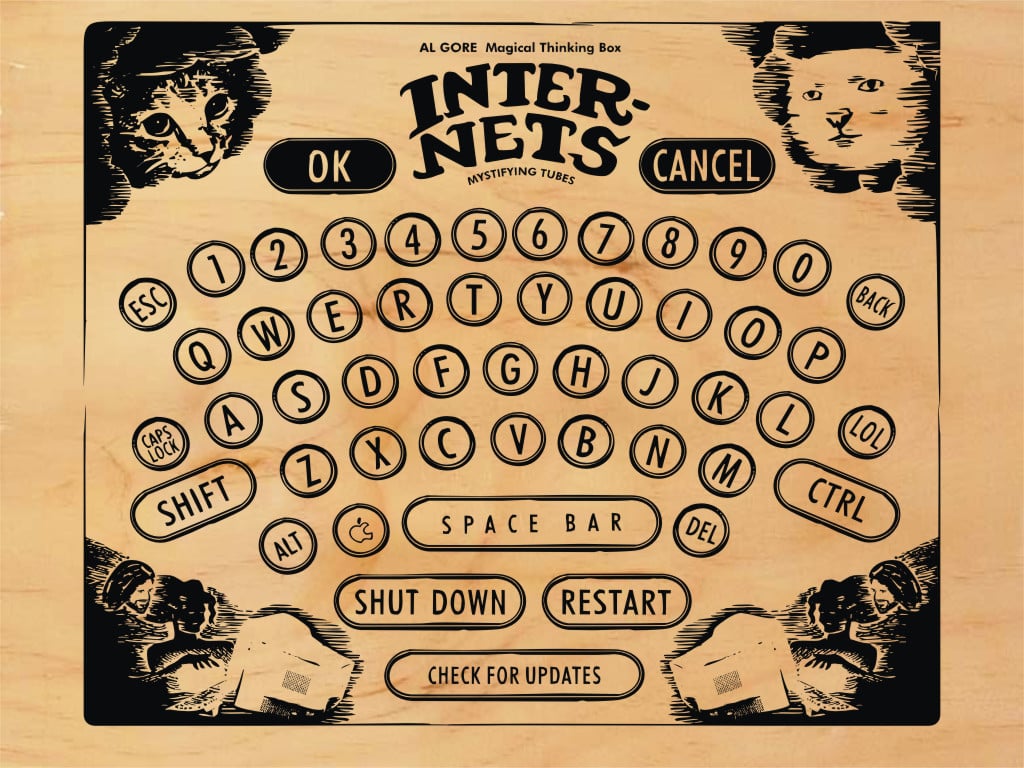 Meanwhile, some find it fun or thrilling to indulge a fantasy that paranormal forces or mysterious energies are at work with the Ouija Board. Some are even pleasantly unnerved by the effect—encouraged, no doubt, by the way the game is sometimes marketed to appeal to superstition. But they shouldn’t be frightened. If they’re too scared by this kind of play, then the joke has gone too far and the game is over. The good news is that you can put the claim of the Ouija Board’s ability to channel paranormal activity to a very simple test. Here’s all the budding myth-buster needs to do: blindfold the player or the believer and then discretely rotate the game board a half turn. If he or she has memorized the position of the letters or the YES and NO answers, the results can be very amusing.
Meanwhile, some find it fun or thrilling to indulge a fantasy that paranormal forces or mysterious energies are at work with the Ouija Board. Some are even pleasantly unnerved by the effect—encouraged, no doubt, by the way the game is sometimes marketed to appeal to superstition. But they shouldn’t be frightened. If they’re too scared by this kind of play, then the joke has gone too far and the game is over. The good news is that you can put the claim of the Ouija Board’s ability to channel paranormal activity to a very simple test. Here’s all the budding myth-buster needs to do: blindfold the player or the believer and then discretely rotate the game board a half turn. If he or she has memorized the position of the letters or the YES and NO answers, the results can be very amusing.
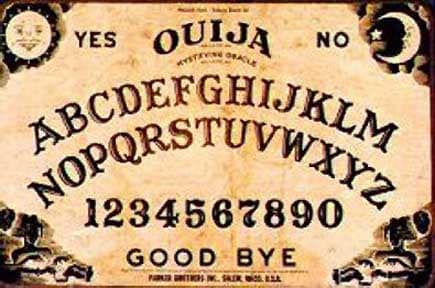 Much as I enjoy seeing a mystery solved, I still don’t completely relish giving out the “secret” since it reminds me of someone explaining in a loud voice to the audience at a magic show how the performer isn’t really sawing his beautiful assistant in half. If everybody knew how the Ouija Board worked, would anybody besides a few psychology students play with it?
Much as I enjoy seeing a mystery solved, I still don’t completely relish giving out the “secret” since it reminds me of someone explaining in a loud voice to the audience at a magic show how the performer isn’t really sawing his beautiful assistant in half. If everybody knew how the Ouija Board worked, would anybody besides a few psychology students play with it?
But in another way the game is not at all unusual. Whenever we play, we agree to temporarily suspend our disbelief. Think of the splendid success of ghost stories told around a campfire. We agree to hear the storyteller out even though we know he’s just playing the tale for the effect it has on us. The process is similar with the Ouija Board, except that the story it’s telling is one we tell ourselves.
 Hours 10 a.m.–5 p.m. | Fri. & Sat. till 8 p.m.
Hours 10 a.m.–5 p.m. | Fri. & Sat. till 8 p.m.